- +91 9428399374
- info@mybesttrip.in
Delhi India
Delhi, India’s capital territory, is a massive metropolitan area in the country’s north. In Old Delhi, a neighborhood dating to the 1600s, stands the imposing Mughal-era Red Fort, a symbol of India, and the sprawling Jama Masjid mosque, whose courtyard accommodates 25,000 people. Nearby is Chandni Chowk, a vibrant bazaar filled with food carts, sweets shops and spice stalls.
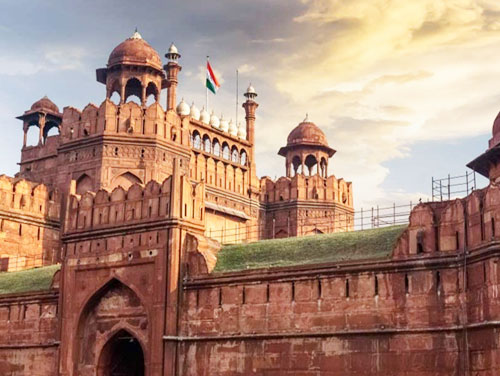
The Red Fort is a historic fort in the city of Delhi in India, which served as the main residence of the Mughal Emperors. Emperor Shah Jahan commissioned construction of the Red Fort on 12 May 1638, when he decided to shift his capital from Agra to Delhi. Red Fort stands not only as a powerful reminder of the Mughal era India but also a symbol of India's struggle for freedom. It was build by fifth Mughal emperor Shah Jahan, when he decided to shift his capital there from Agra in 1638. The fort's turbulent history includes being captured by the Sikhs and the British. To take your imagination back to the ancient era, a one hour sound and light show of the fort's history is held each evening.
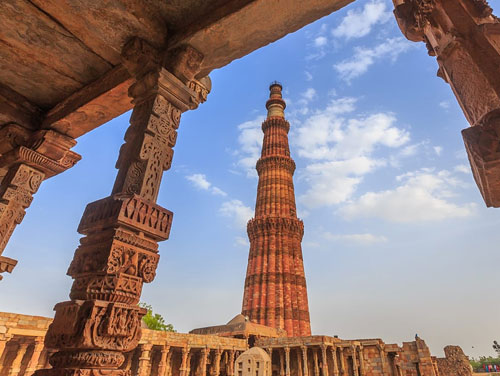
Qutab Minar is a soaring, 73 m-high tower of victory, built in 1193 by Qutab-ud-din Aibak immediately after the defeat of Delhi's last Hindu kingdom. The tower has five distinct storeys, each marked by a projecting balcony and tapers from a 15 m diameter at the base to just 2.5 m at the top. The first three storeys are made of red sandstone; the fourth and fifth storeys are of marble and sandstone. At the foot of the tower is the Quwwat-ul-Islam Mosque, the first mosque to be built in India. An inscription over its eastern gate provocatively informs that it was built with material obtained from demolishing '27 Hindu temples'. A 7 m-high iron pillar stands in the courtyard of the mosque. It is said that if you can encircle it with your hands while standing with your back to it your wish will be fulfilled.
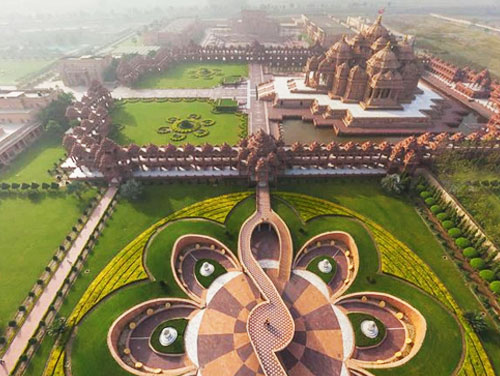
waminarayan Akshardham in New Delhi epitomizes 10,000 years of Indian culture in all its breathtaking grandeur, beauty, wisdom an d bliss. It brilliantly showcases the essence of India’s ancient architecture, traditions and timeless spiritual messages. The Akshardham experience is an enlightening journey through India’s glorious art, values and contributions for the progress, happiness and harmony of mankind. The Swaminarayan Akshardham complex was built in only five years through the blessings of HDH Pramukh Swami Maharaj of the Bochasanwasi Shri Akshar Purushottam Swaminarayan Sanstha (BAPS) and the colossal devotional efforts of 11,000 artisans and thousands of BAPS volunteers. Heralded by the Guinness World Record as the World’s Largest Comprehensive Hindu Temple, the complex was inaugurated on 6 November, 2005.
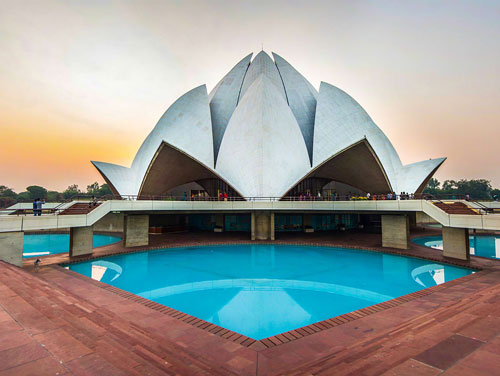
The Bahai Temple is commonly called the Lotus Temple, as it's shaped like a lotus flower. It's particularly pretty at night, when it's attractively lit up. Made out of concrete covered in white marble, the temple belongs to the Bahai Faith, which proclaims the unity of all people and religions. Everybody is welcome there.
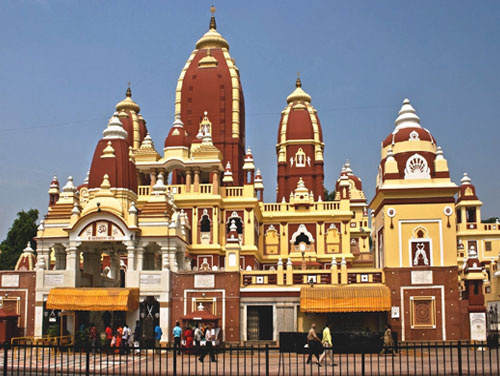
Laxmi Narayan Temple, also known as Birla Mandir, is one of Delhi's major temples and a major tourist attraction. Built by the industrialst Sh. J.K. Birla in 1939, this beautiful temple is located in the west of Connaught Place. Birla MandirThe temple is dedicated to Laxmi and Narayana. The temple was inaugurated by Mahatma Gandhi on the condition that people of all castes will be allowed to enter the temple.
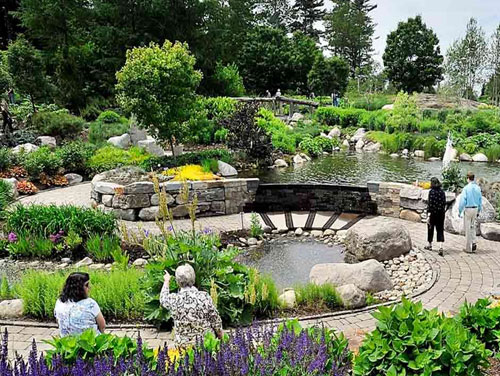
The Garden of Five Senses is not just a park, it is a space with a variety of activities, inviting public interaction and exploration. The project, developed by Delhi Tourism Transportation Development Corporation, was conceptualized to answer to the city's need for leisure space for the public, for people to socialize and unwind. Such spaces add atmosphere and life to a city and cater to all sections of the society.
The twenty-acre site, located at Said-Ul-Azaib village, close to the Mehrauli heritage area in New Delhi, is spectacular. The Garden was inaugurated in February 2003. Majestic rocks stand silhouetted against the sky, others lie strewn upon the ground in a casual yet alluring display of nature's sculptural genius. It was the ideal ground on which to realize the concept of a public leisure space that would awaken a sensory response and thereby a sensitivity to the environment.
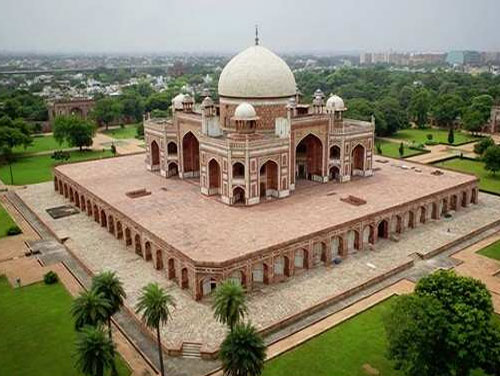
Humayun's tomb is the tomb of the Mughal Emperor Humayun in Delhi, India. The tomb was commissioned by Humayun's first wife and chief consort, Empress Bega Begum, in 1569-70, and designed by Mirak Mirza Ghiyas and his son, Sayyid Muhammad, Persian architects chosen by her.
The tomb of Humayun was built by the orders of his first wife and chief consort, Empress Bega Begum (also known as Haji Begum). Bega Begum had been so grieved over her husband's death that she had thenceforth dedicated her life to a sole purpose: the construction of a memorial to him than would be the most magnificent mausoleum in the Empire, at a site near the Yamuna River in Delhi. According to Ain-i-Akbari, a 16th-century detailed document written during the reign of Akbar, Bega Begum supervised the construction of the tomb after returning from Mecca and undertaking the Hajj pilgrimage.
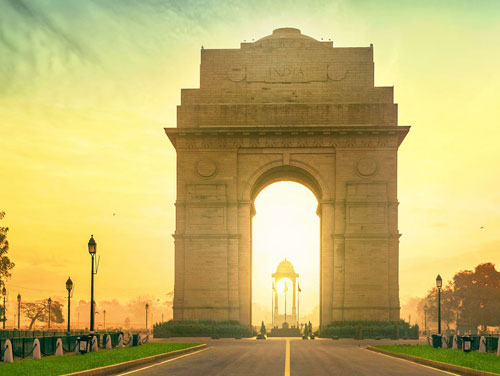
The foundation stone of India Gate was laid by His Royal Highness, the Duke of Connaught in 1921 and it was designed by Edwin Lutyens. The monument was dedicated to the nation 10 years later by the then Viceroy, Lord Irwin. Another memorial, Amar Jawan Jyoti was added much later, after India got its independence. The eternal flame burns day and night under the arch to remind the nation of soldiers who laid down their lives in the Indo-Pakistan War of December 1971.
The entire arch stands on a low base of red Bharatpur stone and rises in stages to a huge moulding. The cornice is inscribed with the Imperial suns while both sides of the arch have INDIA, flanked by the dates MCMXIV (1914 left) and MCMXIX (1919 right). The shallow domed bowl at the top was intended to be filled with burning oil on anniversaries but this is rarely done.
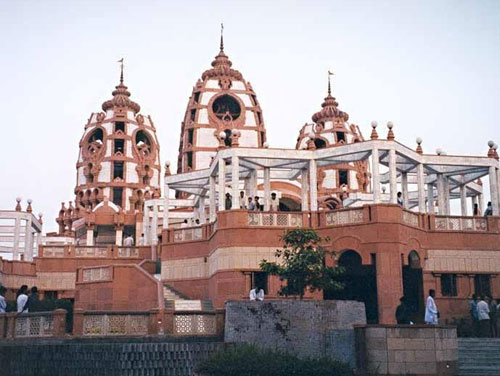
ISKCON stands for the International Society for Krishna Consciousness and has over 650 Temples and centers of Vedic Value Education across 6 continents of the world. In Delhi-NCR alone, it has nearly 10 active temples other than the main ISKCON temple at Sant Nagar, East of Kailash which attracts visitors in lakhs, annually. Housing the World’s Largest Bhagavad Gita -Astounding Gita, it stands 2.80 X 2.00 meters tall, weighing 800 Kgs at ISKCON’s Glory of India Museum and Vedic Cultural Center and was inaugurated by the Honourable Prime Minister of India.
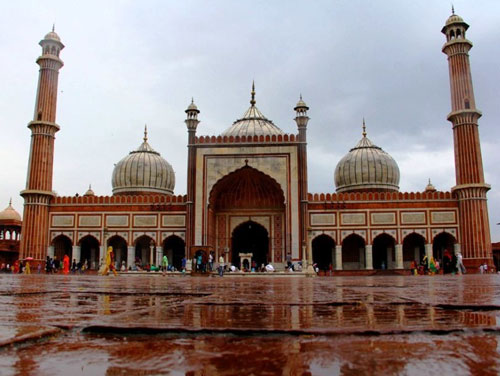
The Masjid e Jahan Numa (lit. the 'World-reflecting Mosque'), commonly known as the Jama Masjid of Delhi, is one of the largest mosques in India.[1] It was built by the Mughal Emperor Shah Jahan between 1650 and 1656 at a cost of one million rupees, and was inaugurated by Imam Syed Abdul Ghafoor Shah Bukhari from Bukhara, present-day Uzbekistan. The mosque was completed in 1656 AD with three great gates and two 40 metres high minarets constructed with strips of red sandstone and white marble. The courtyard can accommodate more than 2500 people. There are three domes on the terrace which are surrounded by the two minarets. On the floor, a total of 899 black borders are marked for worshippers.
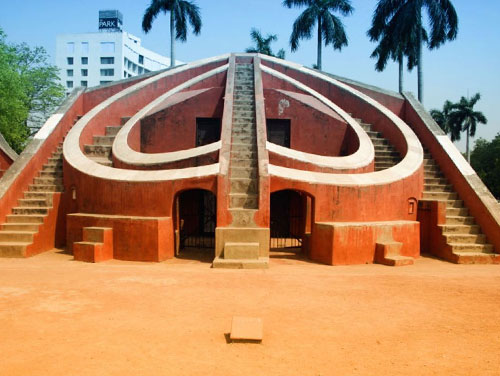
Jantar Mantar is located in the modern city of New Delhi. It consists of 13 architectural astronomy instruments. The site is one of five built by Maharaja Jai Singh II of Jaipur, from 1723 onwards,revising the calendar and astronomical tables. There is a plaque fixed on one of the structures in the Jantar Mantar observatory in New Delhi that was placed there in 1910 mistakenly dating the construction of the complex to the year 1724 Its height is 723 feet (220 m). The primary purpose of the observatory was to compile astronomical tables, and to predict the times and movements of the sun, moon and planets. Some of these purposes nowadays would be classified as astronomy. Completed in 1724, the Delhi Jantar Mantar had decayed considerably by 1867. The Ram Yantra, the Samrat Yantra, the Jai Prakash Yantra and the Misra Yantra are the distinct instruments of Jantar Mantar.
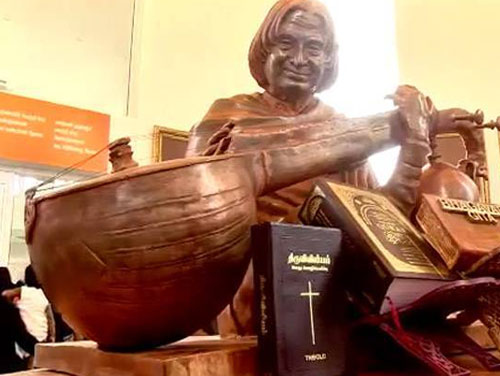
Kalam Memorial was inaugurated at Dilli Haat, INA on July 30, 2016 to keep the legacy of Dr. APJ Abdul Kalam alive in the heart of every Indian. This memorial is a fitting testimony of our undying love for the 'People's President' as he was fondly called. Dedicated to Kalam sir and every child of India, the memorial continues to inspire score of visitors, specially young minds.
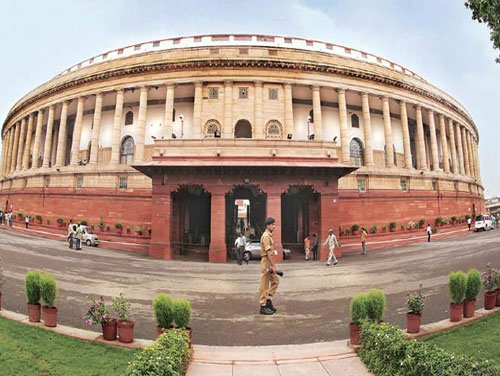
Originally called the House of Parliament, it was designed by the British architects Sir Edwin Lutyens and Sir Herbert Baker in 1912-1913 as part of their wider mandate to construct a new administrative capital city for British India. It is said that the circular structure of the 11th-century Chausath Yogini Temple may also have inspired the design of the building. Construction of the Parliament House began in 1921 and it was completed in 1927.
A new Parliament building may replace the existing complex. The new building is being considered on account of the stability concerns regarding the current complex. The building also needs to be protected because of its heritage.
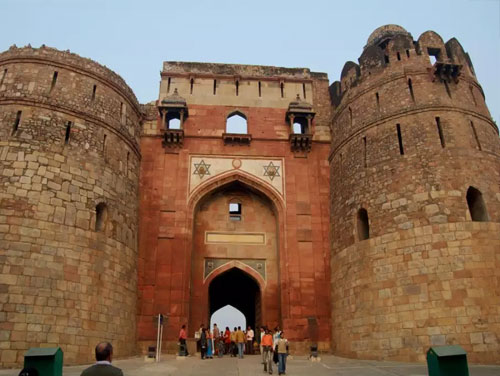
One does not have to go far to see the old fort or Purana Quila standing stoically amidst wild greenery.Built on the site of the most ancient of the numerous cities of Delhi, Indraprastha, Purana Quila is roughly rectangular in shape having a circuit of nearly two kilometers.
The thick ramparts crowned by merlons have three gateways provided with bastions on either side. It was surrounded by a wide moat, connected to river Yamuna, which used to flow on the east of the fort. The northern gate way, called the Talaqui darwaza or the forbidden gateway, combines the typically Islamic pointed arch with Hindu Chhatris and brackets; whereas the southern gateway called the Purana Quila Humayun Darwaza also had a similar plan.
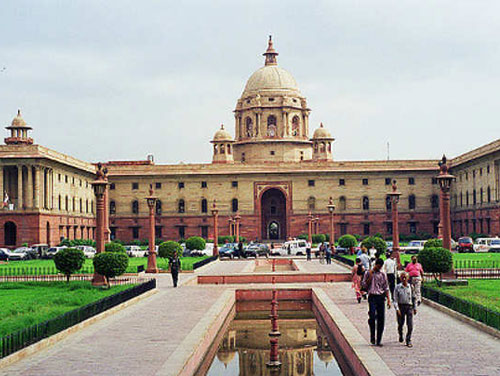
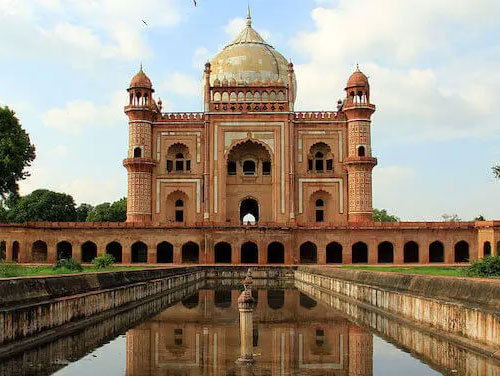
Safdarjung's Tomb is a sandstone and marble mausoleum in Delhi, India. It was built in 1754 in the late Mughal Empire style for Nawab Safdarjung. The monument has an ambience of spaciousness and an imposing presence with its domed and arched red brown and white coloured structures.
Mirza Muqim Abul Mansur Khan, who was popularly known as Safadarjung, who ruled over Awadh was an independent ruler of Awadh as viceroy of Muhammad Shah. He was very rich and most powerful. With the death of Emperor Muhammad Shah of Mughal Empire, he moved to Delhi. When Mohammed Shah Ahmed Shah ascended the throne of the Mughal Empire in Delhi in 1748, Safdarjung was made the Prime Minister (Vazir) of the empire with the title of Vazir ul-Mamalk-i-Hindustan and at that time the empire was on decline as their rule extended only to North India.
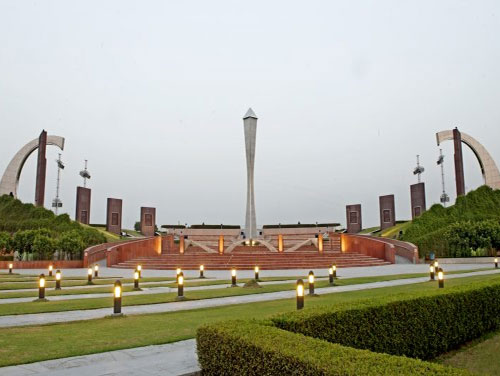
This complex has been constructed in the area of 11.87 acres with a 24 meter high central pylon with petals at the base represents the Guru & his strength and the three “C” arches denote his three followers and the monoliths represent the 10 Sikh Gurus’ with their sayings inscribed on them. Guru Tegh Bahadur Memorial complex set up as a tourist attraction is dedicated to the ninth Guru of Sikhism, Guru Teg Bahadur. In the landscape tranquil background, the 24 meter high central pylon with petals at the base represents the Guru and his strength.
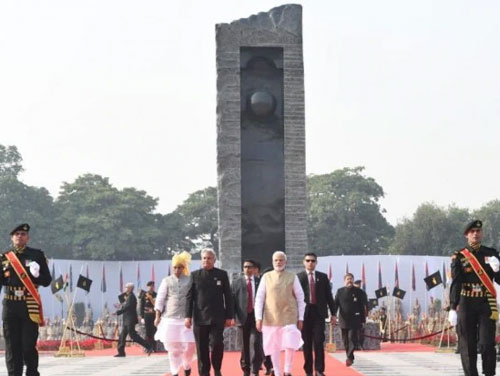
In a sombre ceremony held on October 21, 2018, Hon’ble Prime Minister Sh. Narendra Modi paid homage to the valiant Policemen who laid down their lives while defending the integrity of our motherland by laying a wreath and remembering the brave Policemen who made the supreme sacrifice. He also dedicated the newly constructed National Police Memorial at Chanakyapuri, New Delhi to the nation.
The National Police Memorial (NPM) site is located at the crest of Shantipath in Chanakyapuri, New Delhi and the NPM campus has a tiered landscape having capacity to accommodate over 750 persons. The newly constructed Wall of Valour at NPM on which names of the martyrs are inscribed, stands as a silent acknowledgement of the bravery and sacrifice of Police personnel, who have laid down their lives in the line of duty since Independence.